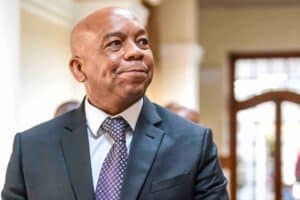Residents endure outages of up to 60 hours as underinvestment plagues city electricity network.

Johannesburg’s City Power is at breaking point. At the end of September, its overdraft stood at R9.1 billion, an increase of nearly R2.4 billion from the end of June.
City Power’s financial woes
On practically every measure, its financial position is dire. Collections are far below what was anticipated. Sales were R500 million – or 10% – lower in the three months. Given near-constant load shedding, this is unsurprising. The figures for later quarters of this fiscal are going to be worse.
Residents are bearing the brunt of this entity that has all but collapsed.
ALSO READ: City Power blames Eskom and load shedding for high outages
In recent weeks, the Rosebank grid has been under severe strain. It is understood that a main line from Parkhurst to Saxonwold, Parkwood and Parktown North failed, meaning that these areas had to be ‘backfed’ from Forest Town. This overloaded the Forest Town substation resulting in continuous trips.
To resolve this, a decision was taken to rather ‘backfeed’ from Rosebank, essentially shifting the problem.
A similar situation exists in Boskruin/Sundowner/North Riding, and there are several other pockets in the metro where grids are overloaded due to ‘backfeeding’.
Continuous load shedding places more strain on equipment, with faults only able to be worked on when the network is not scheduled to be out.
This means residents sometimes wait for between six and 60 hours for power to be restored if there is a trip after load shedding.
In a note to residents last month, ward councillor Tim Truluck strongly suggested “that households and businesses get a solar/battery/inverter system that can help mitigate the increasingly frequent multi-day outages that we will all be experiencing in the foreseeable future”.
Overall, though, maintenance across the electricity distribution network has been neglected, and distribution infrastructure has not kept pace with residential and commercial development. One need only compare the state of the physical infrastructure in areas that Eskom supplies directly (greater Sandton) with those supplied by City Power.
Challenges
It admits that a fifth of its transformer fleet “requires refurbishment and/or replacement”. However, it notes that some of these have outdated specifications and simply cannot be refurbished. These need to be replaced altogether.
It says 60 transformers have reached the end of their useful life and must be replaced, with a further 73 needing to be replaced in the next five to 10 years. City Power says with its current funding allocation, it is only refurbishing three to five transformers a year.
It is no wonder the grid is as fragile as it is.
In the first quarter of the current financial year (July to September), the entity reported a deficit of R1.4 billion, equating to an effective loss of R450 million a month. This is on service charges of R5.1 billion, lower due to consumption for industrial and commercial customers decreasing. It says total losses (of power) are at 29.5%.
Cash collection in the three months was between 81% and 88%, below the budgeted amount of 95%. It is collecting R260 million less per month than planned. Customers owe it a total of R2.85 billion, 31% higher than the end of the last financial year (June 2022).
It is important to highlight that City Power itself doesn’t collect revenue – the city does (the only revenue that flows to City Power directly is from prepaid meters).
Without addressing this misalignment, the situation at the city’s electricity distributor will continue to worsen.
Repairs and maintenance spending is over budget by R70 million in the quarter. On the face of it, this seems like a positive. But contractor invoices from the previous quarter were not paid as it had run out of cash to do so.
Current liabilities (R10.45 billion) exceed current assets (R3.5 billion) by almost R7 billion.
Its solvency ratio is 5:1 (benchmark of 2.1:1), while it liquidity ratio is -197%, against a norm of 60%.
Its overdraft, an internal loan from the city, has ballooned to R9.1 billion, more than R2 billion higher than it budgeted. Due to the overdraft, its cash cover is -1.44. It states that is it not able to cover one month’s operating costs.
This debt is costing it R36 million a month in interest, which is completely unsustainable.
It says the “board will continue to press for the City to review this loan and convert it into equity or to write it off”.
There is little indication that this will fix the problem. An existing R624 million long-term loan from the city (from 2001), with an interest rate of 17.5% per annum, was supposed to be paid off by 2011. It hasn’t been.
This article originally appeared on Moneyweb and was republished with permission. Read the original article here.
NOW READ: City Power tears down houses built on top of power cables






